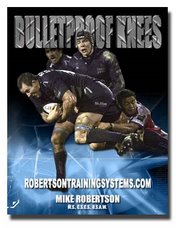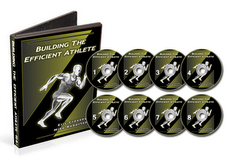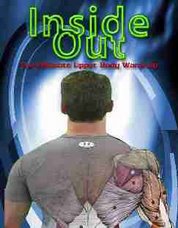
In our second installemnt of the Angry Biomechanist, we're going to discusss the rotator cuff and why it's so important.
We hear all the time about how so-and-so has torn their rotator cuff, or that we need more rotator cuff strengthening in our programs. My goal for you here today is to see what exactly the rotator cuff does in real-life.
When we lift our arms overhead, we get movement from both the scapulae (shoulder blade) and the gleno-humeral (shoulder) joint. As the humerus rotates upwards, the scapulae also upwardly rotates to help you achieve full flexion or abduction of the shoulder.
The problem herein is when one of three things happens:
- You lack extensbility in the thoracic spine
- You fail to have good upward rotation of the scapulae
- Your rotator cuff is weak and fails to depress the humerus
In any case (and most definitely if ALL THREE are occuring), you get impingement of the rotator cuff tendons. Now keep in mind you ALWAYS have some impingement; you always have some friction. The issue is when you go from a normal amount of friction/compression to something greater due to mechanical dysfunction.
If you lack scapular upward rotation, I'd highly recommend checking out Bill Hartman and I's "Push-ups, Face Pulls and Shrugs" article featured previously at T-Nation. This, combined with the Inside-Out warm-up, should get your scapulae moving much more efficiently. And while I didn't discuss it in-depth in this blog post, addressing your T-spine is critical as well. If you lack T-spine extension, your scapulae will never get into the appropriate positions.
If you lack 'cuff strength, you could do a lot worse than checking out Eric Cressey's first feature article at T-Nation, "Cracking the Rotator Cuff Condundrum." I'm sure there are a few things he'd remove now (like the muscle snatch, as I recall) but it will get you started with some basic 'cuff exercises. I also wrote a piece that focuses on external rotation movements titled "Shoulder the Load."
Finally, I think we all agree that those who have stiff posterior shoulders and lack internal rotation ROM would benefit from some dedicated internal rotation work that focuses on the subscap, but that's a little off topic in regards to this post.
Remember, when looking to optimize upper extremity function you have to know how all the separate components work. Once you've isolated things out, though, the goal is to bring up the deficits and re-integrate them into functional, real-world movements. Good luck!
Stay strong
MR









1 comment:
Nice post Mike. There's a plethora of information from words and DVDs and articles!
Post a Comment